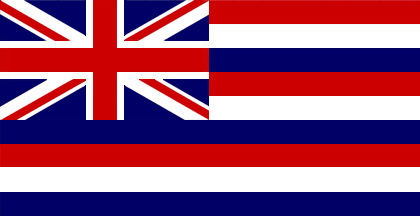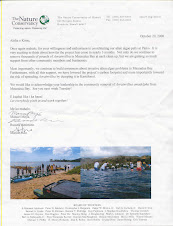


The traditional Hawaiian fishing method of pa'ipa'i was used in Wailupe stream on Sunday, March 14 to corral fish. The goal was to try to determine what types of fish are living in the stream.
Wailupe is one of the last streams in East Honolulu that has not been channelized with concrete.
About a dozen community members waded up the stream to just ma uka of Kalanianaole Hwy. to pa'ipa'i the water ma kai down to the boards and net being used to corral the fish.The days before Sunday included much rain and the water was running fairly strongly on that day from ma uka to ma kai.
Manuel Mejia of the Nature Conservancy and Division of Aquatic Recourses personnel were there to facilitate scientific analysis of the fish.
Some conclusions trying to be drawn include:
1) Are there native fish?
2) What are the alien fish eating?
3) What life stages are they in?
4) Are eradication programs necessary?
5) Are there positive ramifications of alien fish?
Baby ʻamaʻama (stripped mullet), uouoa (sharp nose mullet), kanda mullet and āholehole (bottom picture) were caught in addition to one tadpole. Talapia were seen in the water, but none were caught.
Many baby mullet (pua) were seen swimming approx. 20 yards in front of the pa'ipa'i crew; however, most were very elusive and were able to evade the pa'ipa'i crew, corral and net. Some of the small fish were not positively identified.
Another pa'ipa'i attempt may be made in the summer under different conditions including dryer weather preceeding pa'ipa'i and different tidal conditions.





















